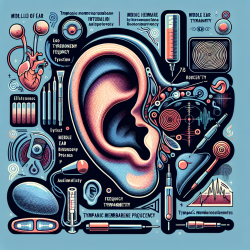As practitioners in the field of audiology and speech-language pathology, it's imperative to stay abreast of research that can inform and refine our clinical practices. A pivotal study, titled "The Effects of Tympanic Membrane Intubation on Middle Ear Resonant Frequency in Children," provides valuable insights into how certain medical interventions, specifically tympanic membrane intubation, affect the auditory system in children. This research is particularly relevant for clinicians dealing with cases of otitis media with effusion (OME) and offers a deeper understanding of the implications of tympanic membrane intubation on middle ear function.
The study meticulously investigated the long-term effects of OME and tympanic membrane intubation on middle ear resonant frequency using multifrequency tympanometry. This technique is crucial for differentiating pathologies that alter resonant frequency, thereby providing a more nuanced understanding of middle ear health. Interestingly, the findings revealed no significant difference in middle ear resonant frequency between children with a history of OME and intubation and those without, suggesting that tympanic membrane intubation does not adversely affect the resonant frequency measure of middle ear function in children.
For practitioners, these findings underscore the utility of multifrequency tympanometry as a sensitive tool for monitoring changes in the middle ear, particularly in the context of OME. It highlights the importance of incorporating multifrequency tympanometry into clinical practice for a comprehensive assessment of middle ear health. Moreover, the study's outcomes encourage further research and dialogue on the subject, fostering a deeper understanding of the intricate dynamics at play in the auditory system following medical interventions like tympanic membrane intubation.
Incorporating the insights from this study into clinical practice can enhance diagnostic accuracy and inform treatment planning for children with a history of OME. It reassures clinicians and parents alike that tympanic membrane intubation, a common intervention for OME, does not compromise the resonant frequency of the middle ear, a key indicator of auditory health. Furthermore, the study prompts audiologists and speech-language pathologists to consider multifrequency tympanometry as a critical component of their auditory health assessments.
Continued exploration and application of research findings, such as those presented in this study, are vital for advancing clinical practices and improving outcomes for individuals with auditory health concerns. By staying informed and applying evidence-based practices, practitioners can make meaningful contributions to the field of audiology and speech-language pathology.
To delve deeper into the study and its findings, I encourage my fellow practitioners to explore the original research paper. The Effects of Tympanic Membrane Intubation on Middle Ear Resonant Frequency in Children.










